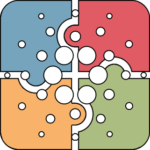
According to the Center for Disease Control (CDC) “Autism spectrum disorder (ASD) is a developmental disability that can cause significant social, communication and behavioral challenges.”
The CDC is committed to continuing to provide essential data on ASD, search for factors that put children at risk for ASD and possible causes, and develop resources that help identify children with ASD as early as possible.
ASD (which includes Asperger’s Disorder and Pervasive Developmental Disorder [PDD-NOS]) is a complex, lifelong developmental condition that typically appears during early childhood and can impact a person’s social skills, communication, relationships, and self-regulation. The Autism experience is different for everyone. It is defined by a certain set of behaviors and is often referred to as a “spectrum condition” that affects people differently and to varying degrees. While there is currently no known single cause of Autism, early diagnosis helps a person receive resources that can support the choices and opportunities needed to live fully.
https://autismsociety.org/the-autism-experience/ – Autism Society
How Prevalent Is Autism?
Autism’s prevalence is growing. In 2021, the Centers for Disease Control and Prevention (CDC) announced that 1 in 44 eight-year-old children were identified with autism, a rise from the 1 in 54 rate announced the year prior. It is unclear why the rates are rising, although better diagnoses and a change in the definition of autism likely play a role.
What is the Autism Spectrum?
The autism spectrum is very broad. The learning, thinking, and problem-solving abilities of people with ASD can range from gifted to severely challenged. People with profound autism typically have significant cognitive impairments and require around-the-clock care, while other people with ASD can have high-powered jobs and live independently. Between 30 to 50% percent of people with autism also have seizures.
https://autismsciencefoundation.org/what-is-autism/ – Autism Science Foundation
National Autism Association Fact Sheet
https://nationalautismassociation.org/resources/autism-fact-sheet/
What causes autism?
Scientists have learned that there is not one thing that causes autism, but that a combination of multiple genetic and environmental factors is the usual cause.
The specific genetic cause of autism can be pinpointed in approximately 15-20% of people with autism. In some cases, autism can be caused by a single gene being mutated; these are called rare genetic variants. In addition to rare variants, there are also genetic influences from common variation. Common variants are mutations that have small effects individually, but if there are enough of them they can significantly contribute to an autism diagnosis. Finally, there are genetic and environmental interactions, which means that certain environmental factors (from toxic chemicals to maternal medical conditions to the age of parents at conception) may also interact with any or all of these genes to change the probability of a diagnosis.
One theory, popular in the late 1990’s and early 2000’s, that vaccines cause autism, has since been disproven by numerous studies conducted around the world.
https://autismsciencefoundation.org/causes-signs-and-symptoms/ – Autism Science Foundation
What is Asperger’s Disorder?
Asperger’s syndrome (also known as Asperger’s Disorder) was first described in the 1940s by Viennese pediatrician Hans Asperger, who observed autism-like behaviors and difficulties with social and communication skills in boys who had normal intelligence and language development. Many professionals felt Asperger’s syndrome was simply a milder form of autism and used the term “high-functioning autism” to describe these individuals.
https://www.autism-society.org/what-is/aspergers-syndrome/ – Autism Society
What is Pervasive Developmental Disorder (PDD-NOS])?
PDD-NOS stands for Pervasive Developmental Disorder-Not Otherwise Specified. PDD-NOS was one of several previously separate subtypes of autism that were folded into the single diagnosis of autism spectrum disorder (ASD) with the publication of the DSM-5 diagnostic manual in 2013.
In the past, psychologists and psychiatrists often used the term “pervasive developmental disorders” and “autism spectrum disorders” (ASD) interchangeably. As such, PDD-NOS became the diagnosis applied to children or adults who are on the autism spectrum but do not fully meet the criteria for another ASD such as autistic disorder (sometimes called “classic” autism) or Asperger syndrome.
https://www.autismspeaks.org/pervasive-developmental-disorder-pdd-nos – Autism Speaks
Final Words
Hopefully by reading through this article, you start to see the important work some of these organizations do in support of fighting Autism. Personally, I have a step son on the ASD spectrum and have first hand experience with children dealing with it. We feel at ADAutism ensuring the great work these companies do continues for years to come. We will do our part to provide support through donations and information sharing. Our goal is to enhance everyones lives including Cardano and its ecosystem, through our foundation’s journey. If you decide to stake your Cardano (ADA) or get your updates from another source, we urge you to get involved and learn more about ASD and how it effects the children of this planet.






